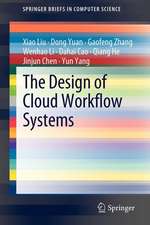Temporal Data Mining via Unsupervised Ensemble Learning
Autor Yun Yangen Limba Engleză Paperback – 17 noi 2016
Furthermore, the book includes illustrations of the proposed approaches based on data and simulation experiments to demonstrate all methodologies, and is a guide to the proper usage of these methods. As there is nothing universal that can solve all problems, it is important to understand the characteristics of both clustering algorithms and the target temporal data so the correct approach can be selected for a given clustering problem.
Scientists, researchers, and data analysts working with machine learning and data mining will benefit from this innovative book, as will undergraduate and graduate students following courses in computer science, engineering, and statistics.
- Includes fundamental concepts and knowledge, covering all key tasks and techniques of temporal data mining, i.e., temporal data representations, similarity measure, and mining tasks
- Concentrates on temporal data clustering tasks from different perspectives, including major algorithms from clustering algorithms and ensemble learning approaches
- Presents a rich blend of theory and practice, addressing seminal research ideas and looking at the technology from a practical point-of-view
Preț: 238.86 lei
Preț vechi: 298.58 lei
-20% Nou
Puncte Express: 358
Preț estimativ în valută:
45.73€ • 47.71$ • 38.33£
45.73€ • 47.71$ • 38.33£
Carte tipărită la comandă
Livrare economică 06-20 martie
Preluare comenzi: 021 569.72.76
Specificații
ISBN-13: 9780128116548
ISBN-10: 0128116544
Pagini: 172
Dimensiuni: 191 x 235 x 13 mm
Greutate: 0.3 kg
Editura: ELSEVIER SCIENCE
ISBN-10: 0128116544
Pagini: 172
Dimensiuni: 191 x 235 x 13 mm
Greutate: 0.3 kg
Editura: ELSEVIER SCIENCE
Public țintă
Undergraduate and graduate students who major in machine learning and data mining. Scientists, researchers and data analysts working on temporal data mining, ensemble learning.Cuprins
1. Introduction2. Temporal Data Mining3. Temporal Data Clustering4. Ensemble Learning5. HMM-Based Hybrid Meta-Clustering in Association With Ensemble Technique6. Unsupervised Learning via an Iteratively Constructed Clustering Ensemble7. Temporal Data Clustering via a Weighted Clustering Ensemble With Different Representations8. Conclusions, Future Work


























